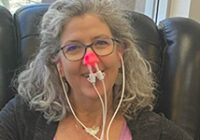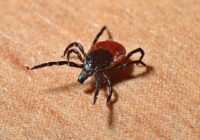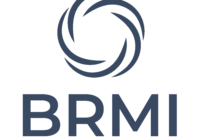Allergies – Hay fever, bronchial Asthma, Neurodermatitis
Mon, 06/07/2010 – 19:21 – Frank Pleus
The Incidence of allergies grows wherever a western life style is implemented. We observe this within populations of first nation people of Canada, natives of Greenland and aboriginal tribes of Papua New Guinea. In the western hemisphere one third of the population suffers from allergies. Looking at Switzerland 15% of the population suffers from a seasonally reoccurring Hay fever and 10% either from Asthma or some form of Neurodermatitis. If you suffer from Asthma, you may find sites like https://www.nyallergy.com/asthma helpful as they can give you advice on how to handle your symptoms.
Western Life Style has caused the people to eat a less nutritive and substantial diet with the greatest variety of processed and fried food, neglecting the human need for fiber, vitamins, trace elements and minerals. Furthermore we can find in nearly all civilisations defining themselves being western that the daily physical activity has been significantly reduced to a minimum of exercise, they create more environmental pollution than ever in the history of man, and the immune system of the human body has become less tolerant towards external influences due to excessive and perpetual changing demands.
Homeopathy assumes that suppressed dermal reactivity manifests itself in distended mucous membrane reactiveness – instead of reacting with a skin rash and itching the patient complains about a dripping nose, streaming or sensitive eyes, coughing, hoarseness, mucus production etc. The more frequently these symptoms are suppressed by the body, deeper mucous membranes within bronchia or other pulmonary tissues will be affected and react with symptoms like Asthma or any other bronchial disease. The homeopathic aim would be to transfer the lung or bronchial symptoms to a less severe level; these mechanisms work like peeling an onion: Asthma would be transferred to hay fever, hay fever in a first step to a pustulous eczema, in a second step to a dermal allergy with itchiness, in a third step to some dermal redness and at the very end to the total healing of the dermal symptom. Short-term the aim should be to calm down the symptoms creating a less suffering patient. In the long run, the constitution of the patient as well as his immune system needs to be strengthened.
Orthodox medicine distinguishes between asthma elicitors and trigger mechanisms. Typical activators for asthma are proteins deriving from house dust mites, animals (cats, dogs, horses, cavy etc.), pollen, mold spores and other environmental substances the patient is frequently exposed to acting as allergens causing mucous membrane reactions. These allergens are usually in the air and so are breathed in all the time. Things like a Dog Hair Air Filter can help to keep the air clean in the home, but there are still substances in the air outside of course. Secondary chronic aero-digestive tract infections during early childhood and yet unknown genetic factors might promote the development of Asthma. Once an asthmatic inflammatory reactiveness exists a lot of unspecific substances might trigger an Asthma attack (e.g. cold air, exercise, smoke, spicy smell, malodour, air pollutants, chemicals, etc.). These concomitant factors might contribute to an acute bronchial activeness but don’t explain the fundamental reasons.
From our perspective Allergens that can cause allergies, asthma or any kind of neurodermatitis and that can be tested on Prick-Skin-Tests or IgE-bloodtests are considered to be secondary. Only organisms that show a disturbed and thus inadequately functioning “inner milieu” react allergic. The disturbance of the “inner milieu” happens slowly and can be compared with a stepwise decline of the milieu’s equilibrium metabolism is based on due to chronic stimuli deriving from “overproteinization”. This stepwise decline happens inwardly and unperceived. A causative treatment therefore needs to apply the deranged “inner milieu” and the responsible reasons (e.g. diet). These primary reasons are generally based on food intolerances, which come into existence in early childhood approximately within the first twelve months after birth, during the times when the baby is nurtured with animal protein the digestive system can not yet tolerate. In the early months protein from cow milk can not be digested properly since the necessary metabolistic steps are not yet established and their specific degradation happens inadequately. This way lots of maldigested protein particles are produced, that are identified as foreign bodies, accumulate and create a constant immune reaction within the mucosal system of the bowel (“Peyer’s patches”) or pulmonary tissue. If later on the baby is continuously fed with cow milk, the organism will react with the same immune responses in the sense of foreign body’s reaction, which will in the long run lead to the exhaustion of the immune system and aggravate the body’s allergic reactiveness.
For us this underlines the necessity to avoid feeding babies below 12 months of age any kind of cow milk and its products as well as chicken eggs and nuts due to their potential allergenic impact. The most often used drying powder in baby alimentation is produced with cow milk and might contribute to an elevated allergenic risk in dispositional children. Babies should avoid these products. Instead they should be breastfed or receive soy milk based food. Investigations on children deriving from families where both parents considered themselves as being allergic persons show that the incidence of asthma counts for 40% if both parents were suffering from allergies. If these children from atopic families were exclusively breastfed within the first 18 months or nurtured with exclusively plant protein sources (e.g.soy), the probability to develop asthma during childhood diminished to lower than 12%.
Even later on during child- and adulthood diet plays an important role regarding the development of allergies, asthma or atopic dermal reactions. A hyperproteinized body encounters more allergic reactiveness than an alkalized organism. Hyperacidity – due to nutrition or stress – affects the body’s regulatory capability.
Mast Cells activate an allergic reaction once they got in contact with an allergen by opening up and releasing histamine. This is why antihistaminic medication can calm down the allergic reaction for the moment but doesn’t contribute to the fight against the real reasons. In a hyperacidic organism mast cells do react much more sensitive and intense. This is why creating an “alkaline milieu” is one of the basic demands in allergy treatment. This means the patients need to be put on alkaline powder or pills for a period of 1-2 years as well as a consistent adjustment of their diet (none or few animal protein, no dairy products, no refined sugar; but a fortiori vegetables, fruit, potatoes, avocados, chestnuts etc.).
Histamine that causes and favors allergic reactions is normally included in many comestibles like meat, sea food, shellfish and tomatoes e.g.. For this reason to avoid animal protein – especially from cow milk products, pork, game, seafish and eggs is very important for allergy disposed patient.
In case the intestinal flora is unbalanced the mucous membranes are disturbed in their resorption behaviour and digestive capacity. Protein molecules that might not be fully digested may pass the mucous membranes easier due to intestinal permeability disorder. These only partially digested protein molecules that pass the wide gaped mucous membranes get in contact with lymphatic elements being located beyond the foregut and induce an immune reaction, since they are recognized as antigens. Since nearly 70% of the body’s immune system can be found within the gut, it’s very comprehensible that the immune system is overcharged in case of unbalanced intestinal bacterial flora. This is why normally not disturbing protein finally acts as an allergen. Allergies indirectly therefore can be considered as intestinal mucous membranes disorders. The intestinal bacterial flora renews itself through a vegetable diet with a high percentage of raw vegetables and avoiding animal protein. A stool test will give us a more specific insight what bacteriae the patient might lacking in.
Toxins and heavy metals block the function of lymphocytes and macrophages and therefore reduce the capability of the immune system in general. We therefore always need to investigate a possible heavy metal burden to accomplish an effective allergy treatment. Consequently we investigate the patient’s dental situation before defining a patient’s personal treatment protocol. Mercury e.g. can be easily transmitted from a mother to her unborn child. Investigations on mother sheep and her newborns could find a correlation between the mother’s amalgam fillings and the contamination of the newborn. The mercury concentrations of the newborn sheep had been three times higher than the mother’s tested via DMPS. During childhood the applied load with mercury derives through vaccinations, which still contain thimerosal as an antiseptic and antifungal agent; regardless the amount of heavy metals we ingest through the nutrition chain due to environmental pollution via industrial plants and individual road traffic (lead containing gas, palladium leaving automobile convertors meanwhile running etc.). Another group of toxins that need to be considered are food additives many being of genetically modified or chemical origin.
For detoxification reasons we recommend the daily intake of:
Vitamin C 1000 mg 1-0-0
Zinc 30 mg 1-0-0
Selenium 100 yg as drinking vial 0-0-0-1
N-Acetyl-Cystein 600 mg 0-1-0
Green brown algae 1-0-1 (1/2 teaspoons/d)
In accordance to the test results we gain through a mobilization test for heavy metals (e.g. DMPS) we add further orthomolecular substances.
We often observe candida colonization within the population of allergic persons. In contradiction with the orthodox medicine the alternative thinking assumes the fungus problem being a systemic one, eventhough a systemic proof is hard to find. This is why many critics doubt their systemic existence. Nevertheless positive test results for candida in antibody blood or stool tests remarkably accumulate in allergic subjects. Experience a treatment with antifungal substances harms the intestinal flora additionally and favors the occurrence of allergies
Since immune reactions are also influenced by psychological aspects and emotions, mental stress as well as trials and tribulations can contribute to an allergic reactiveness additionally.
Allergies promoting factors:
1. Hyperacidity, Malnutrition
2. Dysbiosis, dysbalanced intestinal flora
3. Toxins and Heavy Metals
4. Vaccinations
5. Candida and Mildew
6. Histamine
7. Psyche, emotional stress
Treatment:
One of the most important components within the treatment regimen is an alkaline diet. In addition:
Acute stage:
Sanum Ruberkehl drops 8-0-8
Ceres Urtica Sambucus 5-5-5
We usually add orthomolecular substances like vitamins and trace-elements according to the findings of a hairmineral-analysis (HMA), showing the patient’s individual deficits.
Also very helpful are:
Butterburextract with an antihistaminic effect e.g.:
Tesalin N (Zeller) having the same efficiency like cetirizine without the often occurring side effects like sleepyness. The application rate can be individualized due to a dosage depending impact.
or
Pollivita (Permamed) 2-3 x per day
As well as:
Gencydo 1% nasal spray used several times per day.
In very insistent cases you may add:
Citrus e fructibus/Cydonia e fructibus Solutio ad injectione (Wala)
Berberis/Quarz Solutio ad injectione (Wala)
Injecting both together subcutaneously, paravertebral next to the 7th cervical spine
Preseasonal: 1 x per week
Seasonal: 2-3 times per week or 1x per day
Asthma being the main problem we do Neuraltherapy to the lungs:
Carbo veget. Injeel / Plantago HA (Heel)
Viscum forte (Heel)
Mucedokehl, Citrokehl (Sanum)
Latensin (Sanum)
Nigersan Aspitox (Sanum)
using the acupuncture points:
LU 5, LU7, Colon 4, Epicondylus radialis volar side
Somatotopic correlations can be found with:
Sinus sphenoidalis
Ganglion sphenopalatinum and Ganglion stellatum
Chronic stage:
According to our experience only a long run therapy will result in a satisfactory and lasting condition. For the first year we might be able to ameliorate the acute situation, but the allergy will remain. In the second year the general health status improves showing less acute phases with less severe symptoms. Throughout the third year the allergy will diminish; notwithstanding if hay fever, early spring sunlight exposure, insect bites of dermal allergies were the issues.
For building up the intestinal flora and stabilization reasons we use:
Notakehl drops 10-0-10 for 4 days
Pefrakehl drops 10-0-10 for 7-10 days
Fortakehl drops 10-0-10 for 7-10 days
One after another; continuing with:
Sankombi drops 10-0-10 for several months
This regimen might need to be repeated curewise (spring and fall e.g.)
In case of fungus proof in the stool test we give:
Exmykehl suppositories 0-0-0-1 before bed time for 10 weeks
The immunesystem is build up especially through zinc, selenium, manganese and magnesium which should be added in form of a multi vitamin and trace element remedy. We normally use:
Burgerstein AntiOx-Detox 1-0-0 for several months
To stimulate the immunesystem we use:
Utilin X6 Cps. 0-0-0-1 before bedtime even weeks Fridays
Recarcin X5 Cps. 0-0-0-1 before bedtime uneven weeks Fridays
For three months, then break for one month and restart again for three months (rhythmically/curewise).
To retune the body we sometimes use:
Acidum formicicum drops 10-0-10 (Sanum: Formasan)
Apis per injectionem 1-0-0 once per week (WALA)
Catalysts of the Krebs-Cycle s.c. 1-0-0 once per week (Heel)
According to our experiences very effective:
Autohaemotherapy
The patient’s blood is mixed with homeopathic and isopathic remedies and potentized according to the rules of homeopathy. The treatment is done at a weekly or biweekly basis and shows a very enduring effect.
Recommendable remedies are:
Hay fever:
AbsinthiumX1/Resina Laricis X3 (Weleda) in case of eye and nose affection (as drops)
Conjunctiva (Wala) as injectable vial
Calcium Quercus (WALA) as injectable vial
Asthma:
Cuprum aceticum (Weleda) as vial
Cuprum aceticum comp. (WALA) as vial
Olivenit (Weleda) as vial
Pulmo/Tartarus stibiatus (WALA I + II) as vials









